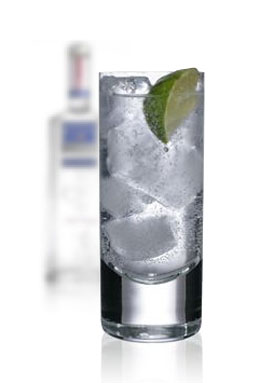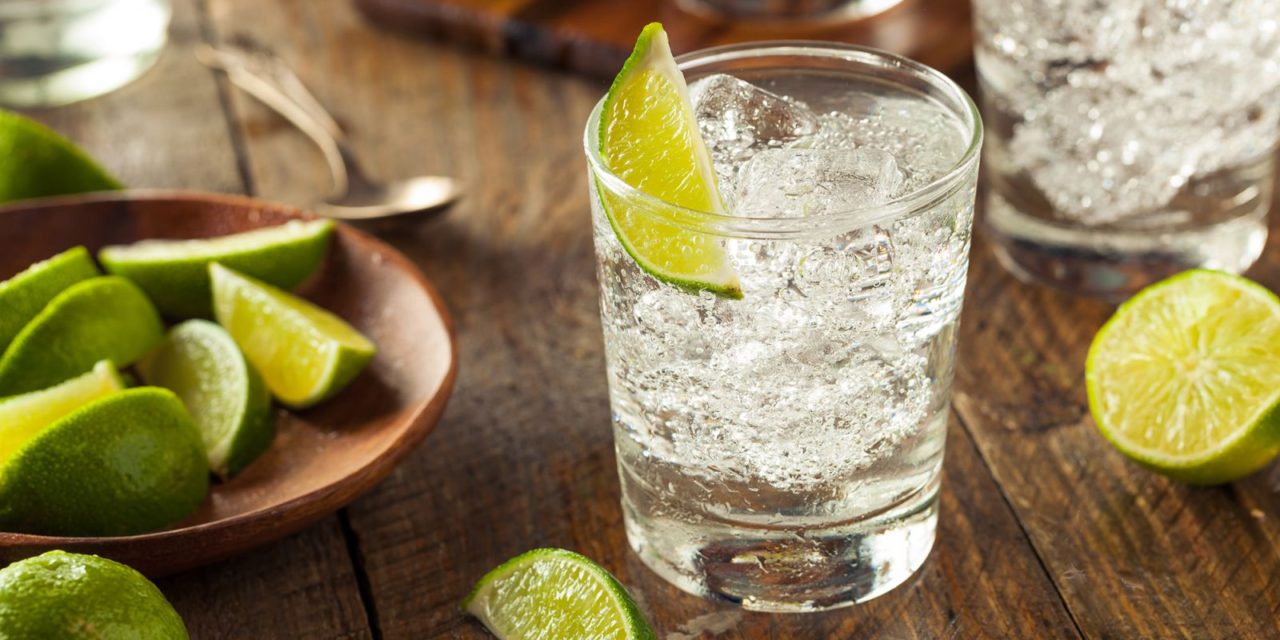
I’d like to examine the importance of the Gin and Tonic. I’m kidding, right? No, the Gin and Tonic is important for many reasons. And some of those reasons have historic implications. But before I get ahead of myself, and for those of my friends who like me to get to the point, here’s the perfect recipe:
- 4 ice cubes, spheres are better (spring water at less than -10ºF)
- 3 ounces gin of Plymouth Gin (or Oude Jenever if you can find it)
- 3 ounces of Q tonic water
- a splash of soda water
- 1 lime wedge (about 1/8 thick) squeezed slightly into
- a chilled 12 oz. Waterford (or other flint glass) tumbler
So the idea behind the recipe is the assumption that one wants to create a gin and tonic as close to the gin and tonic enjoyed throughout the British Empire, certainly during, but even long before the height of the reign of Queen Victoria.
After mixing the G&T above, you must find a wide veranda and a large peacock wicker chair. Ideally, the drink would be delivered to you on a silver salver to insure that the glass has not been warmed during the delivery. It is from this vantage point that stiff upper lip British aristocrats surveyed the transformation of the world into English countryside.
During the middle ages, the search for any process or any substance that could stave off sudden ignominious death was furious. Literally, no stone was not turned over in the hunt for some form of protection from mysterious sudden death. Among the powders and potions where any number of things that were boiled, fermented, and distilled. Berries, seeds, grain all went into the pot. If these liquids could alter a person’s state of mind, perhaps they could alter a person’s state of health. The problem was that many of these liquids caused blindness, unconsciousness, and death. Eventually, the juniper berry was one of those things that got thrown in the pot. Stewed juniper berries actually produced a juice that was palatable enough to drink yet did not kill the drinker. However, the fluid result of boiling juniper berries did kill bacteria when added to water.
So in the 15th century, gin (from the Dutch for juniper, jenever) became a really good idea. While people still died from the plague or malaria, adding a little gin to water kept them from spending all day in the outhouse, or dying of dysentery. It was still a few centuries from the gin and tonic, but gin was now fully embraced as “beneficial”. In contrast to wine, gin was seen more as medicinal, taken to ward off illness rather than something to savor and compliment dining.
The “tonic” came next in the evolution of the G&T, but it arrived in two parts. Modern tonic water is basically carbonated water and flavoring that is similar to quinine. The carbonated water would wait to the 19th century, quinine was waiting for a delivery system as early as 1638. No one knows how long the residents of ancient Peru and surroundings have been getting mellow by squeezing the bark of the cinchona tree, in all likelihood, it was centuries before nosey Jesuit priests became curious. The ante-Peruvians made the first “tonic water” by mixing ground cinchona bark with sugared water.
The wife of the Spanish Viceroy in Peru, the Countess of Chinchon, had fallen violently ill with malaria. Her husband begged the local Incas for an antidote. The Incas instructed her to drink the potion containing the ground bark. The potion worked and she recovered. In her honor, the Spanish renamed the Peruvian tree the “Cinchona” tree. Gin and cinchona bark hadn’t met yet, however, these two components were destined for the same glass.
In the 17th and 18th centuries, quinine flourished as a medication for malaria. he ground bark was then imported to Europe and quickly prized. But Peru prohibited exporting Cinchona seeds. So, as colonialism and hard-drinking officers created more need, the supply of Peruvian Cinchona bark could not keep up with demand. Prices skyrocketed – at one point, the bark powder was worth its weight in gold.
By the middle of the 18th century, the British empire was everywhere. British hegemony was in residence in more places on earth than any country at any time previous or since. The British Navy made the Empire possible, it advanced it, it protected it, and it moved assets from anywhere to anywhere else with impunity. The British Navy did not have the best ships or the biggest ships, and periodically, it did not have the most ships. Britain had the best trained crews. No other nation could match the British Navy for experienced men. Time at sea may have averaged — averaged — 15 years, with many seamen claiming more than 50 years of service.
So how do you get that many men, and how do you keep them on the ship. The answer is relatively simple — you get them drunk, kidnap them, then keep them drunk with a daily ration of grog. Though grog was chiefly rum-based, gin was an excellent substitute and had a growing reputation for its medicinal value. Gin, rather than rum, was certainly fueling the British Army since the Battle of Antwerp in 1585.
By the 18th century, the British Army and the British East India company were experimenting with the combination of gin and quinine. Both drugs helped fortify the troops separately, what more natural result than the combination of the two. To help reduce the intense bitterness of the quinine, the soldiers of the British East India company added sugar to the mix. The G&T was born. Well, almost, in 1850, in was still a flat drink.
Joseph Priestly in 1767 he invented a way to carbonate water by suspending it above fermenting beer. Priestly figured out that this carbon dioxide would infuse into the water and turn it into something similar to the naturally carbonated “spa” waters that doctors of the day thought had curative properties. Could it be true, yes, carbonated water was medicine too, oh my, this is too good to be true, first Quinine, then Gin, now carbonation. Doctors of the day soon proscribed the carbonated water neat for a variety of aliments such as “Stone of the Bladder”. However it didn’t hurt that the salt in the Schweppes’ mineral waters also masked the impurities in whatever it was mixed with. So patients soon added the carbonated water to their own self-medications. The “dash and a splash” was born. It quickly had many siblings.
By about 1810, the modern Gin and Tonic was born and the world became a better place. It was probably the over indulgence of the tonic, that lost the British their empire. While uncountable British colonels sipped G&Ts on the veranda, the natives were getting restless. In the end, it might be said that the good ol’ Gin and Tonic was responsible for both the rise and the fall of the British Empire.
Since I stole some of the data above from the Q Tonic people, I’ll close with an ad for their tonic water. “Q has returned the essence of tonic water—Peruvian quinine. We custom blend Q Tonic with all natural ingredients, including handpicked Cinchona bark grown in its native habitat, the slopes of the Peruvian Andes. As a result, Q Tonic is a better tasting, healthier, and more authentic tonic water.”
Remember, it’s good for you!




